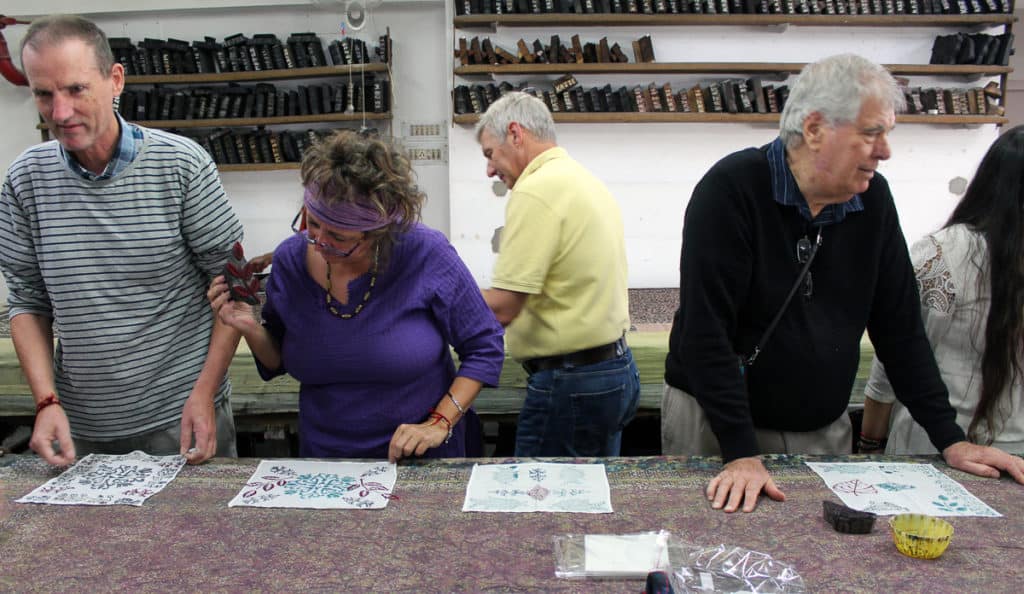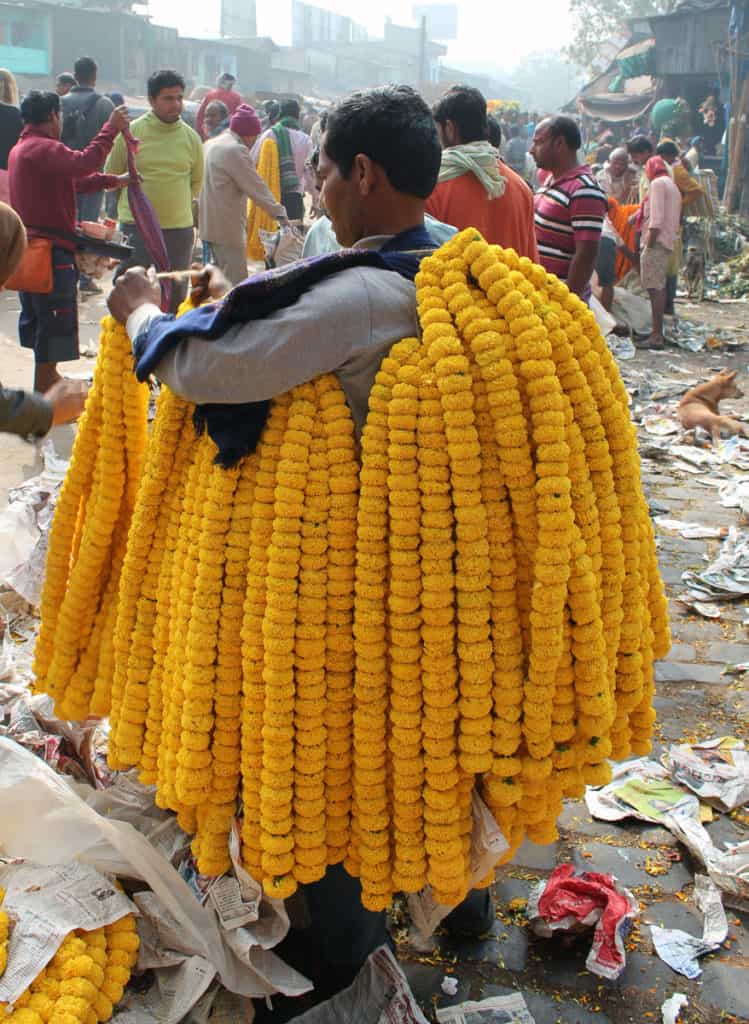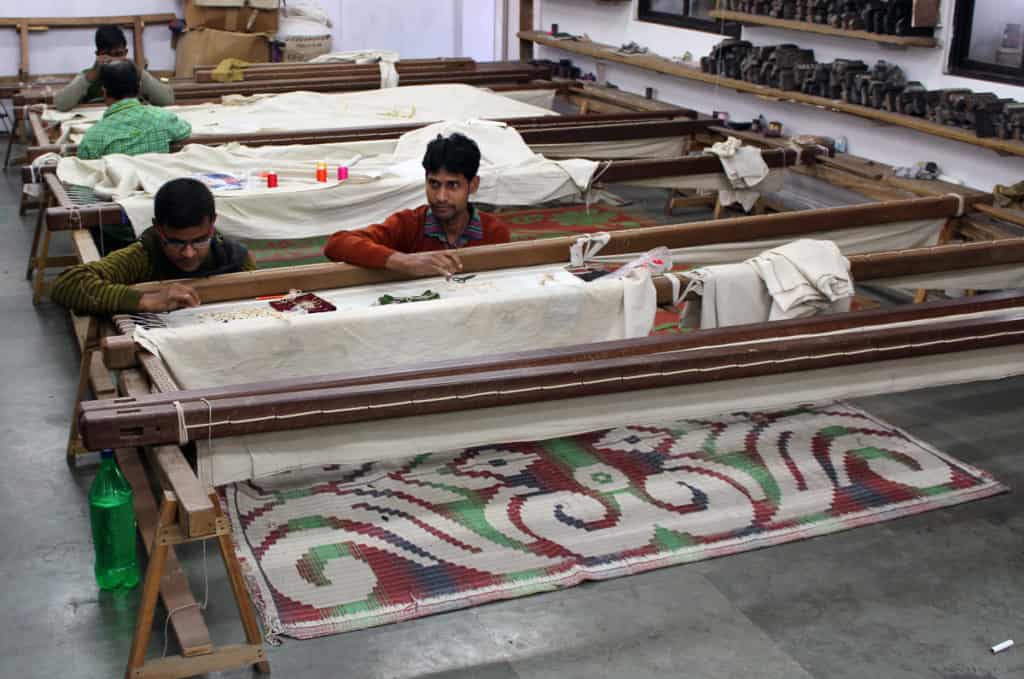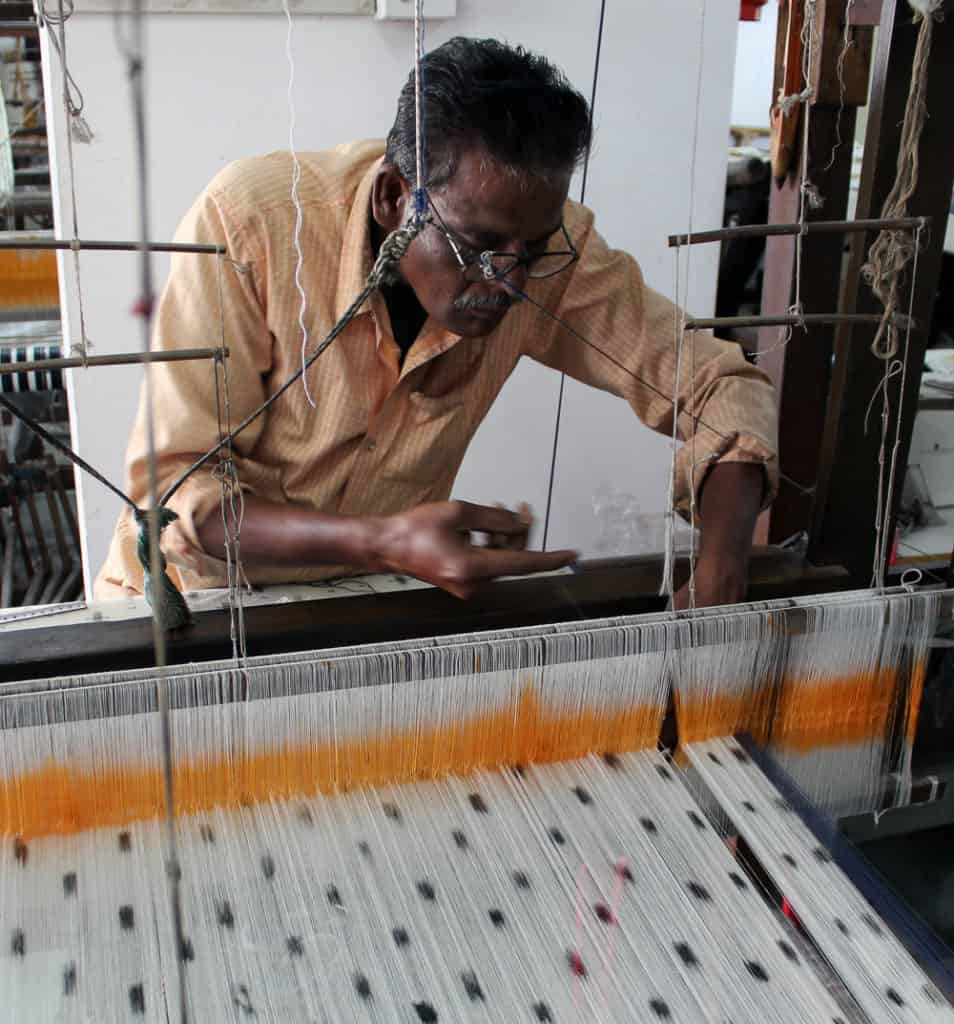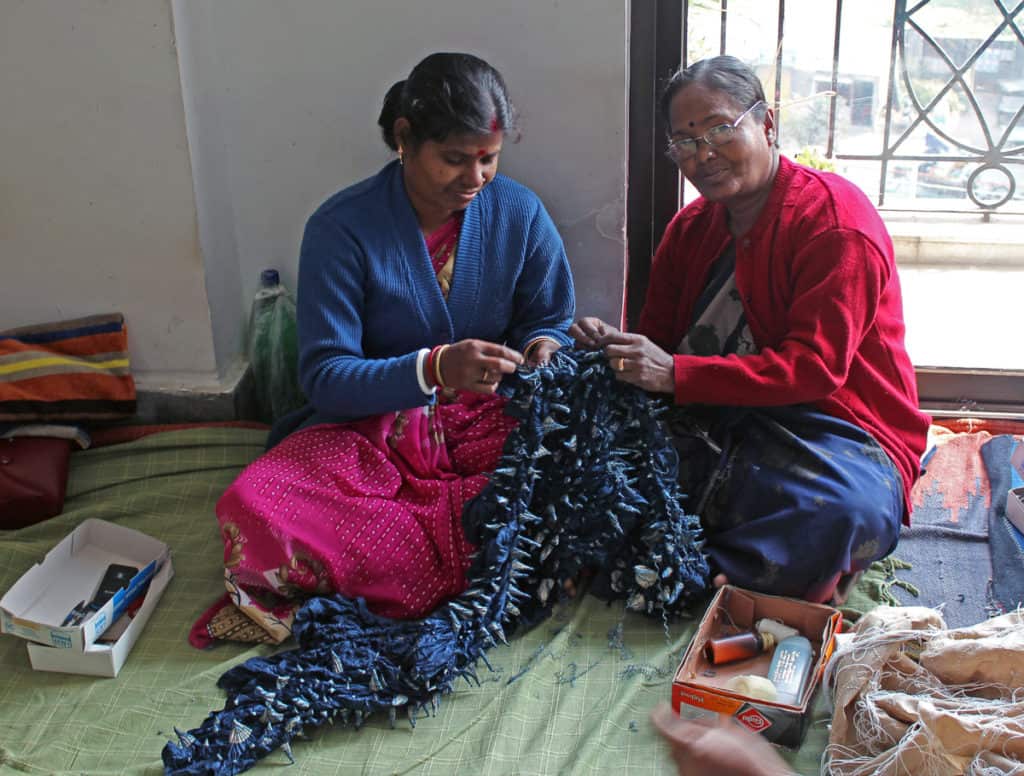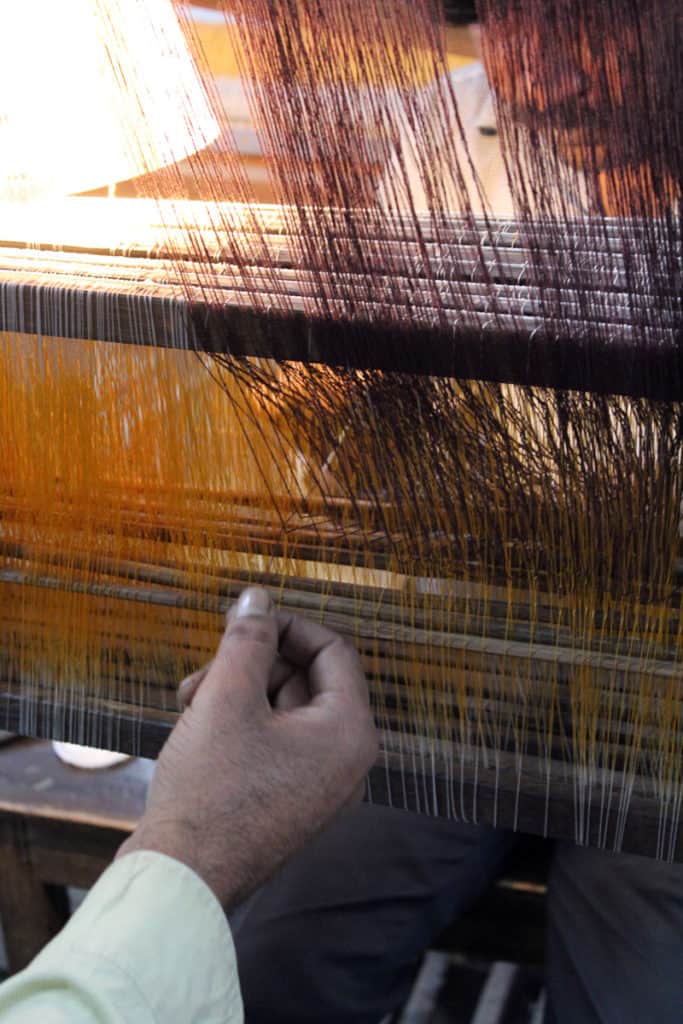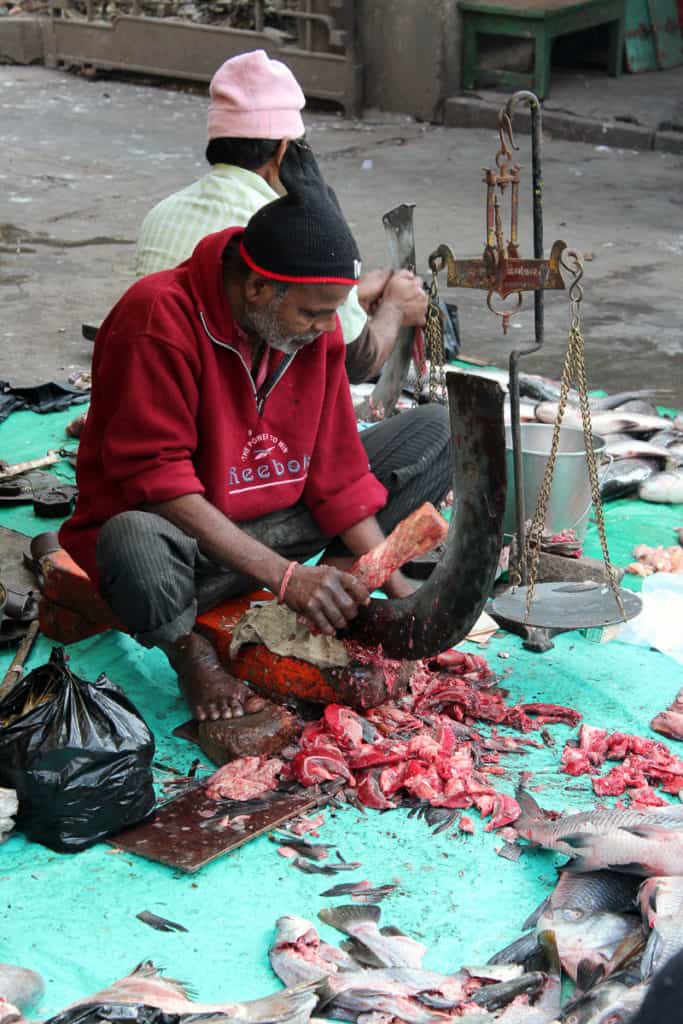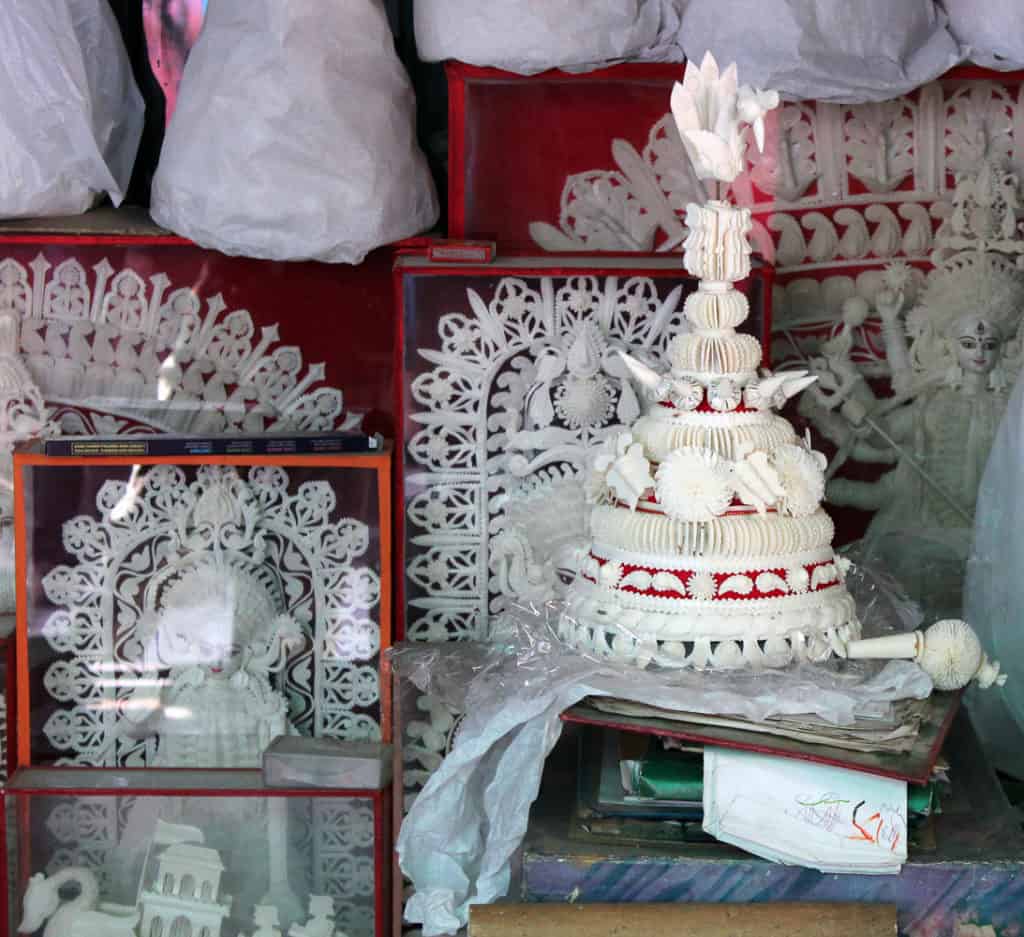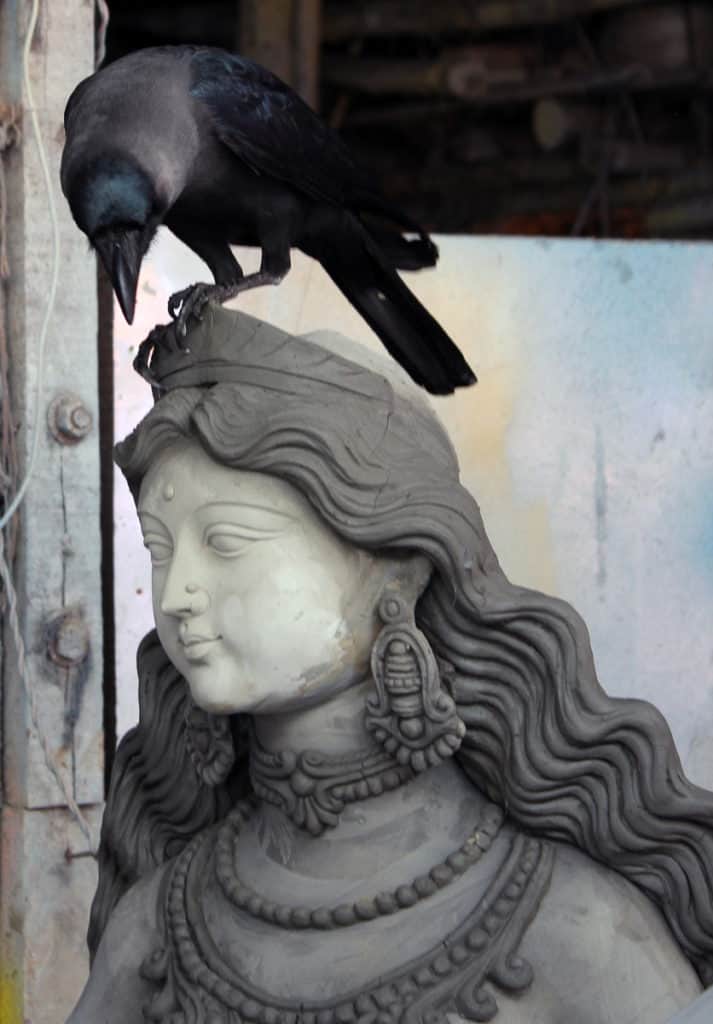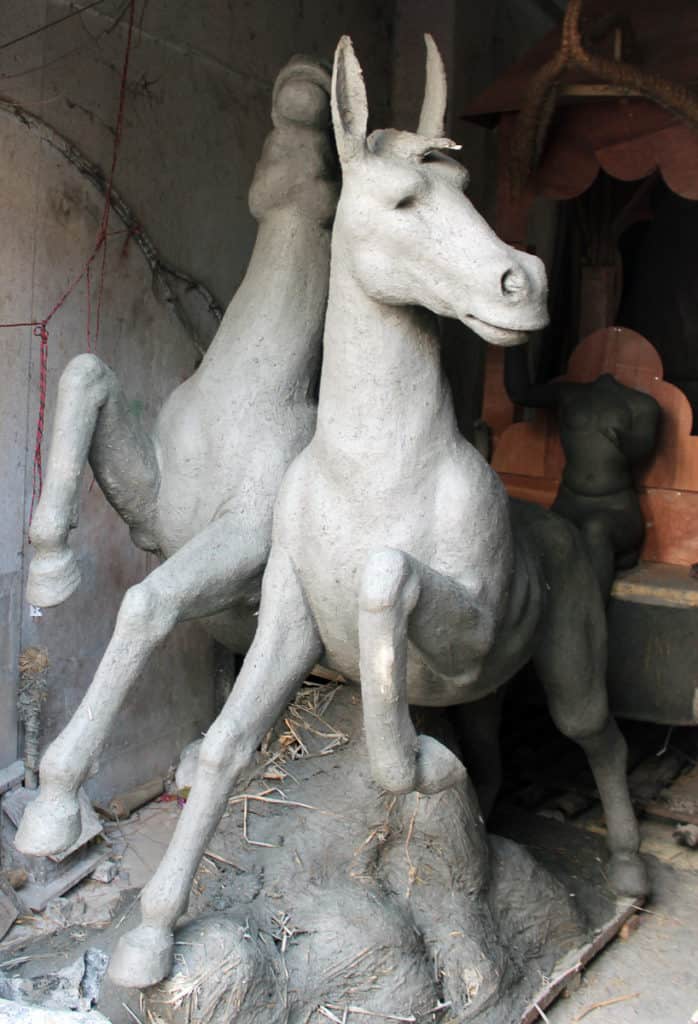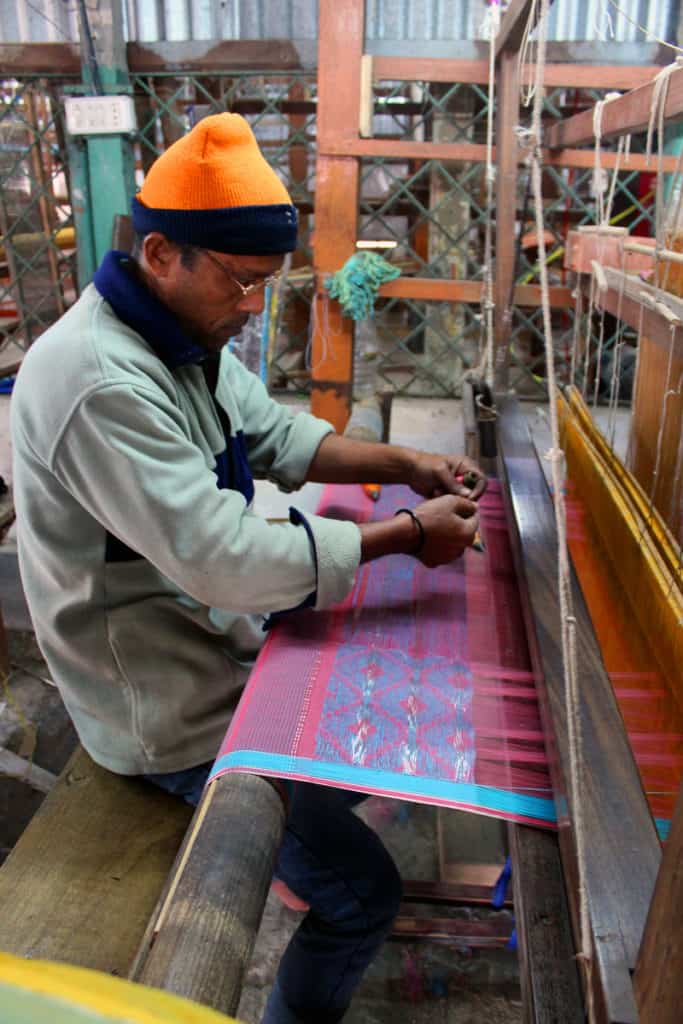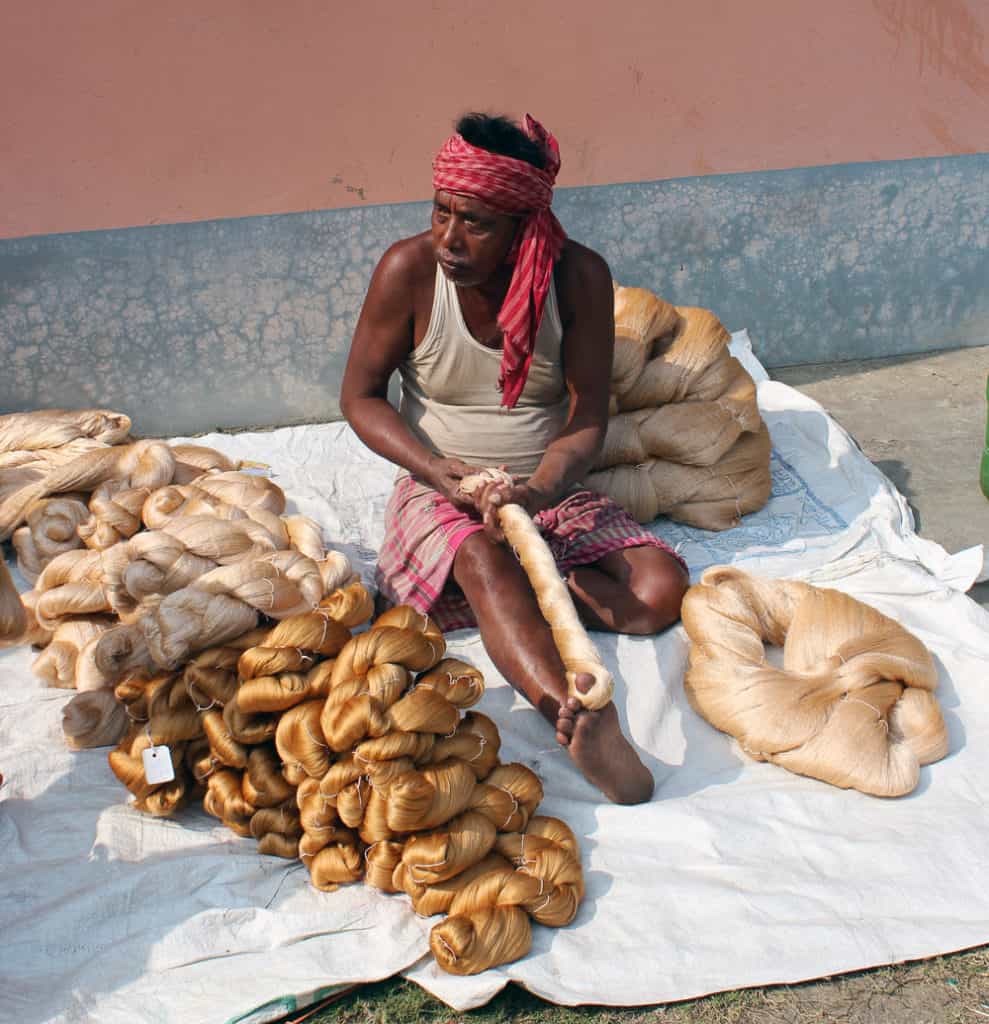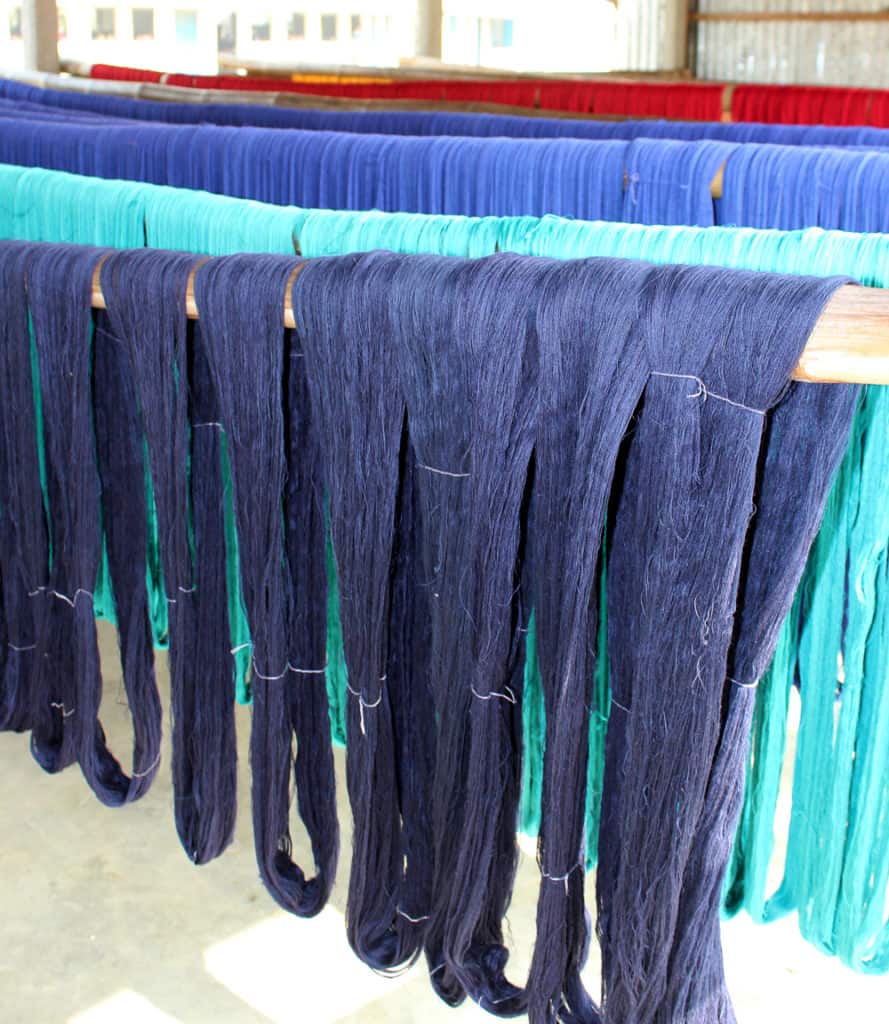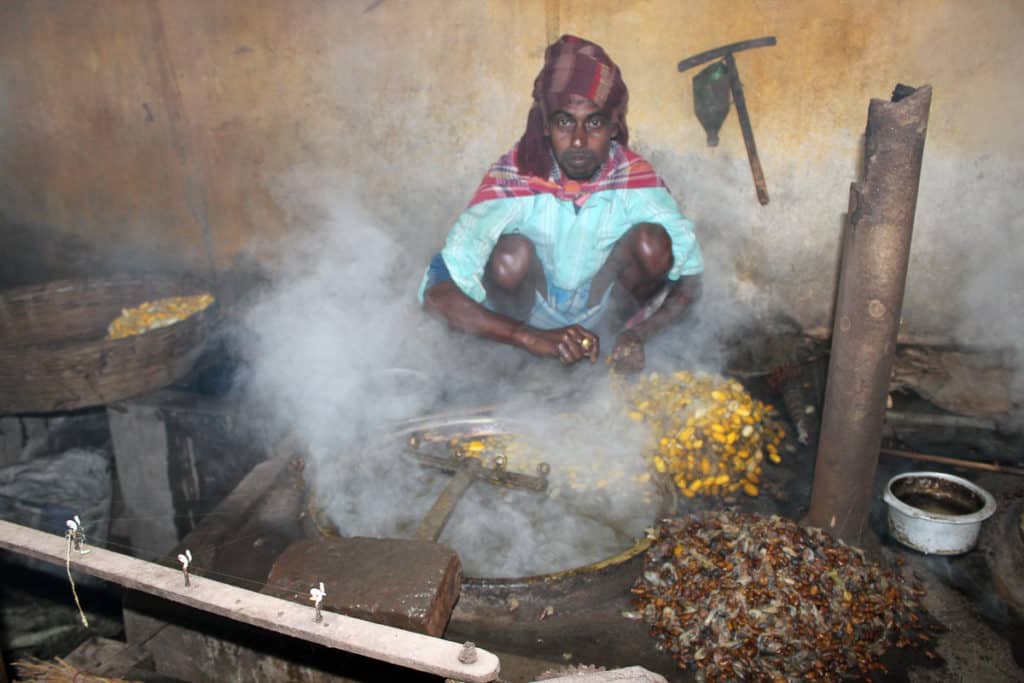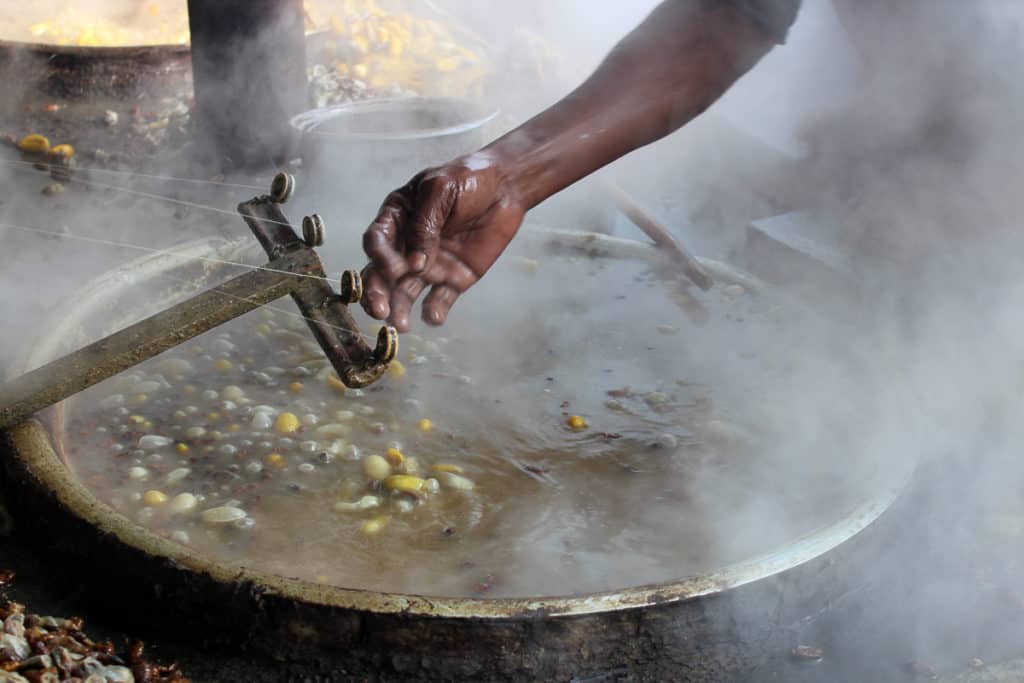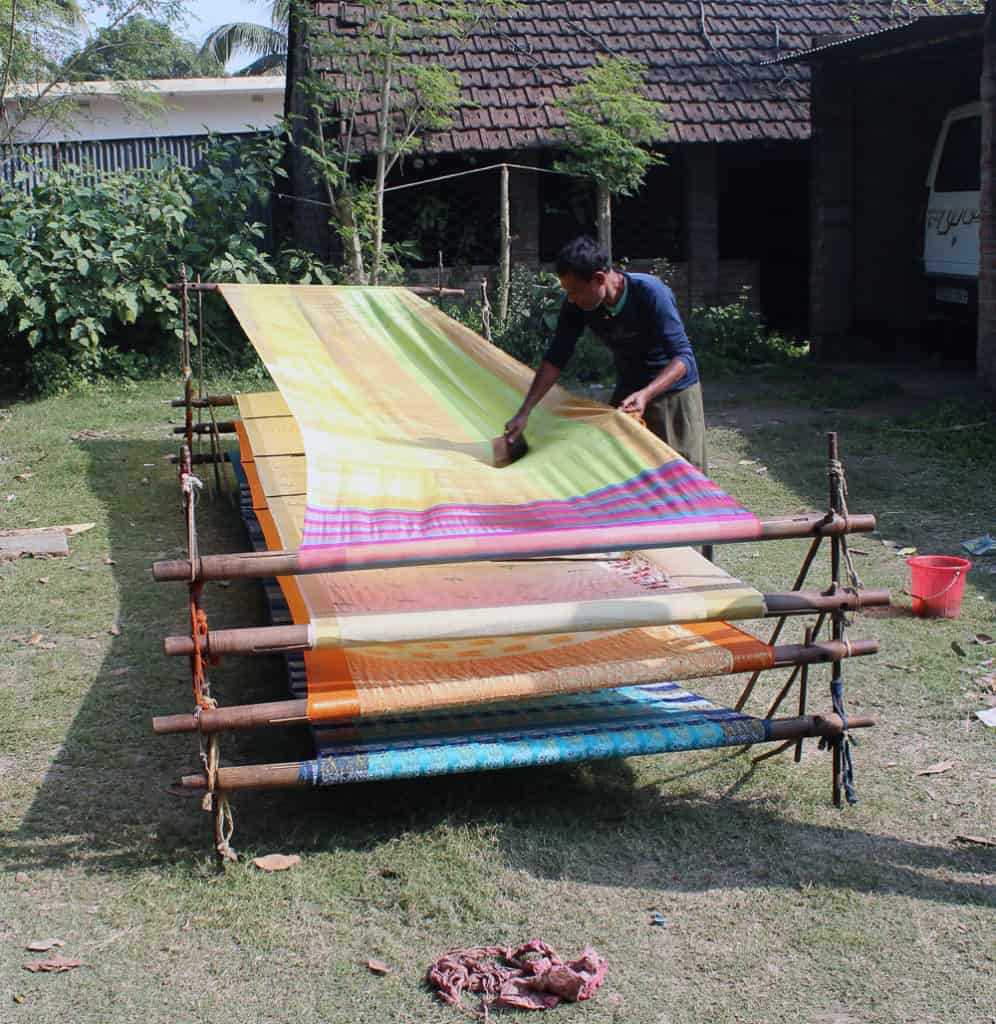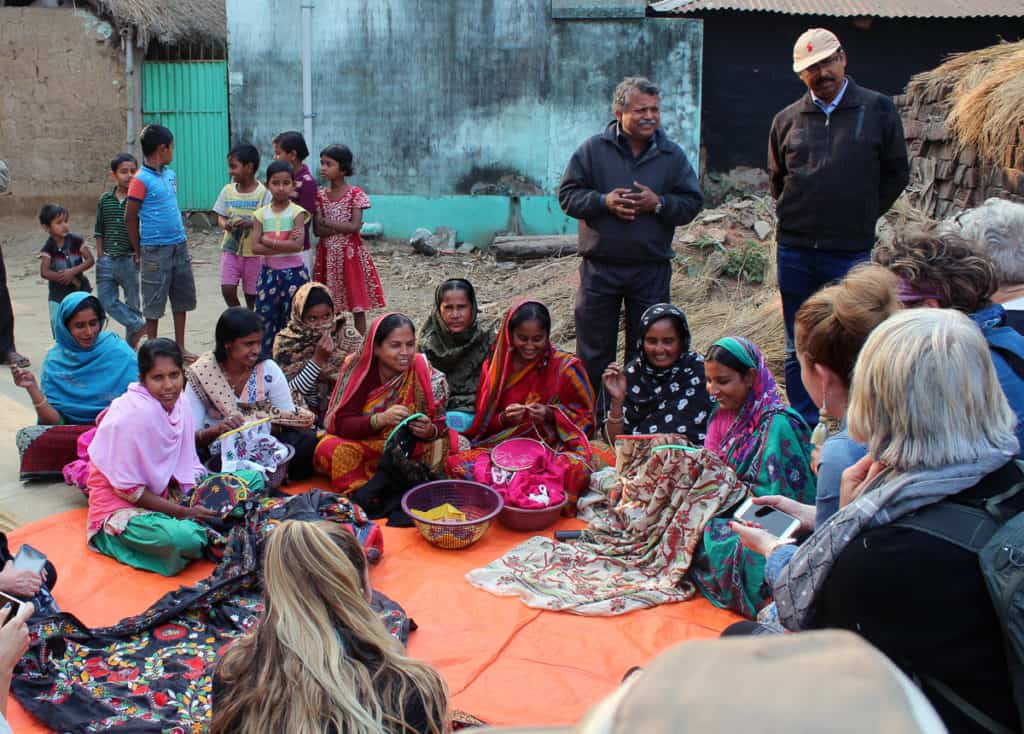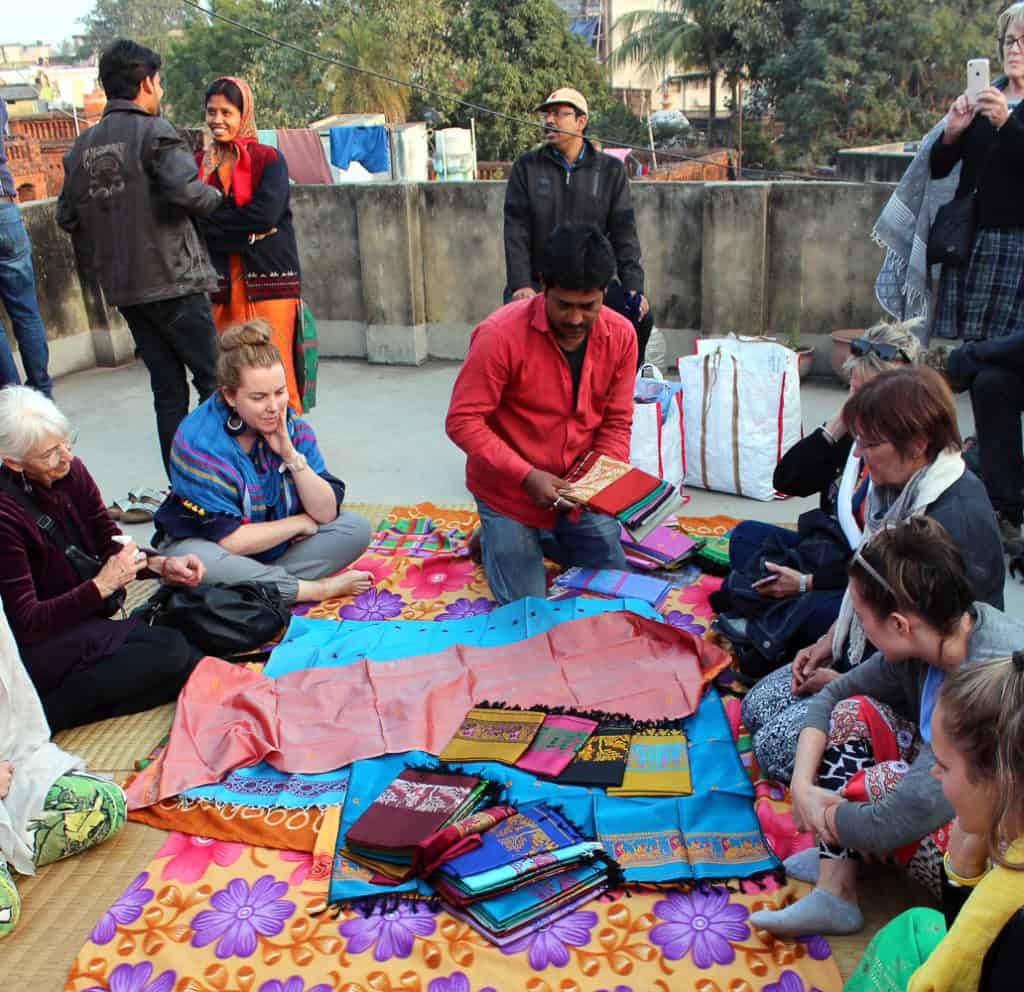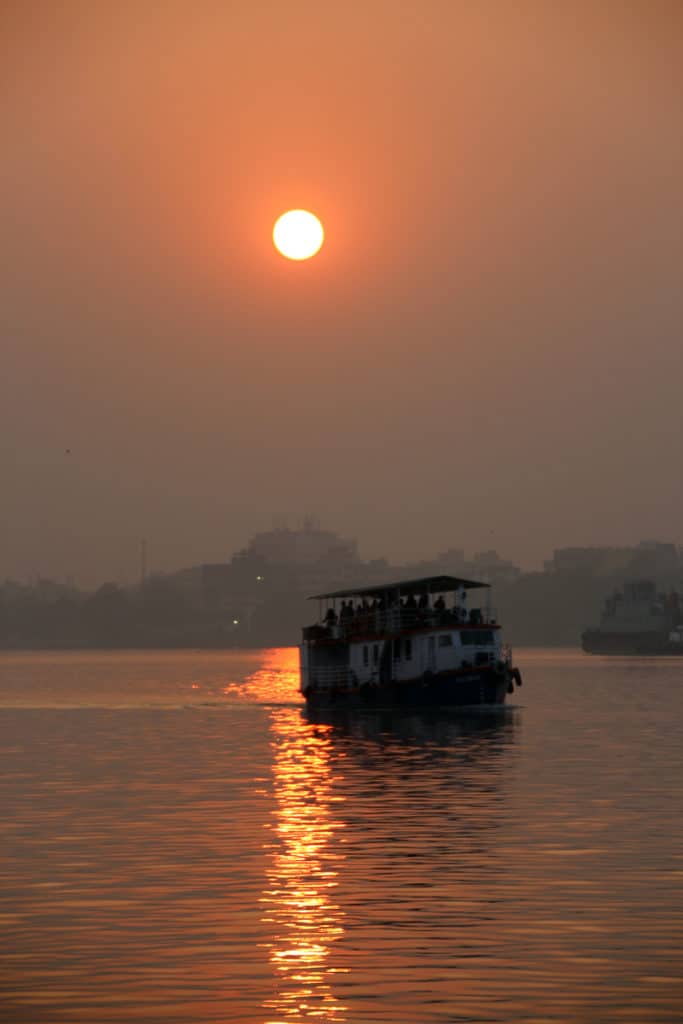In January 2018, I had my fourth trip to India. And, as always, Incredible India did not disappoint! But this visit was more incredible than most, thanks to tour leader Julia Raath.
Julia has extensive experience teaching fabric design and printing, both the Higher Education and Vocational Education sectors in Australia. In the last 16 years, she has also been working in India with the National Institute of Fashion Technology (NIFT) where she collaborated with colleagues to design a project which engaged students in current industry practice in both countries.
I have known Julia since the 1990s when I was her student at East Sydney Technical College, so I was certain that she would be both knowledgeable and easy to get on with, as our guide. It seems I wasn’t the only one to jump at the chance when Julia posted the idea of Surfaced, a two-week tour of culture, cuisine and craft in Kolkata and West Bengal. Places filled very quickly, and the group ended up being sixteen in all, 13 women and three men, ages ranging from mid-twenties to my 81-year-old husband Greg.
I am a professional textile artist, but also work and teach in a whole range of other media. When viewing other people’s artworks, my questions are always “How was that made? What are the techniques? How did they do that?” So, the emphasis on craft production was for me the most important aspect of the trip.
We did many of the usual tourist things, in the way of visiting temples, historic buildings, museums and markets, and ate amazing food every day.
However, seeing the traditional crafts of each region, not just in shops in finished form, but in the actual process of making, was a real privilege…and an eye opener. There was more than enough to fully engage even those spouses and partners who were not artisans themselves, especially when given the chance to have a go at some of the techniques.
Throughout the tour, we were all fascinated to observe both age old methods in antiquated and sometimes downright appalling settings, and more modern approaches to production, and to health and safety. This was usually brought about by strong communal efforts to improve working conditions and increase market opportunities.
Our explorations started with a visit to the flower markets on the very first morning in Kolkata. Talk about diving right into the local milieu. Wherever you go in India, you need to be prepared to find absolute and exotic beauty in amongst the almost overpowering melee of people and poverty.
- Kolkata flower market
- Kolkata flower market
That afternoon we were accorded a real treat at Rangeen, the in-house production unit for the Weavers Studio, an organisation whose mission is to “revive traditional crafts and textile arts…while supporting and empowering communities in rural India.” Here we saw just about every textile technique we would come across later in the tour…and had fun trying out a couple of them.
- Kolkata Rangeen hand embroidery
- Kolkata Rangeen fine Jamdani muslin weaving
- Kolkata Rangeen tie dye
- Kolkata Rangeen tie dyeing 2
- Kolkata Rangeen setting up a warp for weaving
- Kolkata Rangeen machine Kantha stitching on block printed silk
While in Kolkata we strolled through a street food market where Suvendu was able to answer never-ending questions from us about “What on earth is that stuff? What is that for? How is that cooked?”
Since we then went on to a wonderful cooking class and banquet at a local art dealer’s home, we were able to see and taste how these exotic ingredients were transformed into delicious dishes. I now use mustard oil in most of my cooking instead of less tasty vegetable oil alternatives.
On the nearby side streets, we saw many examples of two artforms used in producing ephemeral icons and decorations for rituals.
Shola pith, a milky white sponge-wood which is relatively cheap and easy to obtain, is carved into delicate and beautiful objects for use in festivals and special occasions such as weddings, then soon discarded. It also has many other uses, including the famous pith helmet.
The potters’ quarter was full of tiny workshops crowded with beautiful god-like artworks made from mud sourced from the sacred Ganges river or imported from other areas in India. During special festivals, the statues are floated down the nearby river, eventually sinking to let the mud return to the river once again. This tradition symbolizes the return of the gods and goddesses back to nature.
- Kolkata mud statue
- Kolkata mud statue production 2
- Kolkata mud statue
Our first stop outside Kolkata was Phulia, one of several communities in the North East of Bengal which trace their sari weaving traditions to Tangail, in Bangladesh. Most homes in the area have at least one loom: there are up to 70,000 of them operating in this one small village alone. Phulia has developed its own style called Fulia Tangail: vibrant colours and intricate designs woven in double jacquard.
It was fascinating to watch the yarn dyeing process prior to seeing the weaving.
- Phulia preparing silk yarn for dyeing
- Phulia silk yarn vat dyeing
- Phulia 3 dyed silk yarn
In the Murshidabad and Berampore region we got up early to see the extraction of silk from silkworms: it is such hot and toxic labour in unventilated sheds that the workers have to start at 4am to avoid the heat of the day.
- Berampore boiling coccoons 1
- Berampore boiling coccoons
- Berampore winding silk filament onto shuttles
Whole villages are turned over to weaving, and even the streets are used to stretch out the warps: enough to make many six metre long saris at once.
As a final step, the very fine silk saris are heavily starched to give them body and protect the delicate fabric.
We had three wonderful days in the town of Shantiniketan, where an open-air university was established by poet and philosopher Rabindrinath Tagore early last century.
Today the district is also famous for various artisan communes that grew out of Tagore’s experiments in rural reconstruction. We visited the Amur Kutir Society for Rural Development, a cooperative designed to rejuvenate and develop local handicrafts, together with some relatively new introductions, such as a leatherwork factory.
My personal favourite technique throughout the whole trip was Kantha, which is very similar to Japanese Boro. Originally a poor person’s method of repairing old clothes, or recycling old saris, cloths and rags by patching scraps together to turn them into a new garment or quilt, Kantha has become an art form. The word Kantha now tends to be used for all kinds of embroidery used in that way, though classically it was a straight running stitch like the Japanese Sashiko.
In the Shantiniketan-Bolpur district we spent a fabulous afternoon with the women of a tiny village, who were all working at Kantha embroidery of various kinds. Using embroidery hoops, the women take months to do a single piece, sometimes by two or more people working together.
En route from Shantiniketan to Bishnapur, we stopped in Bikna village to watch the making of metal sculpture using the dhokra technique, a form of lost wax casting. Again, the working facilities were less than adequate in Western terms, but the whole village worked together to turn out a wonderful array of brass objects, both utilitarian and decorative.
Bishnapur itself was our next stop, a town of terracotta temples and Baluchari weaving of silk on silk saris. It was especially interesting to observe how the warp was strung out in a two-person “workshop” on the floor of a disused temple.
The next day, in nearby Panchmura potters’ village, there were close to fifty families creating the area’s celebrated Bankura terracotta horses with its elongated neck, as well as making a wide range of other clay items from jewellery to the more mundane pots.
Back in Bishnapur, after a wander around some of the beautiful terracotta temples, we had an intriguing visit to a maker of Dashavatar playing cards. The game is played with 120 cards hand-painted with beautiful images based on the ten incarnations of Lord Vishnu. The game is still played, but the cards themselves, traditionally made from up to eight layers of cloth put together in a very complex manner, have become collector’s items in themselves.
Our day finished with a call in to a four-storey home weaving establishment which climaxed in the usual sari sale, this time on the rooftop.
Back in Kolkata, part of our last day was spent at Sasha, a not for profit organisation which has been supporting the work of more than a hundred communities of artisans since 1978. A wonderful shop/collective promoting regional handicrafts. Again, I broke out the wallet…
We also dropped in on Maku Textiles, where young designer Santanu Das is making his mark using a single colour system (indigo) on modern garments which carry a hint of reference to traditional styles, but with a contemporary twist. We were not allowed to take photographs there, unfortunately.
Our final fling was a sunset cruise on the Hooghly River, the local branch of the Ganges, watching evening life along the teeming shores. We were lucky enough to see the Ganges dolphins swimming in the murky waters: physically blind, apparently because of the impenetrable pollution of the river, they navigate by sonar.
The trip to India was certainly a “real world experience” for even the most travel weary of us. As always on my visits to this amazing country, I was struck by the openness and humour of the people, together with the beauty of their handicrafts, but this is contrasted with the harshness of their lives and the chaotic, heavily polluted world they live in. India is not for the faint hearted. It is “in your face” and exhausting, but it also epitomises the word “exotic” for me.
Julia created an unforgettable trip for us, and the lively discussions we had with her, Suvendu and with each other, about politics, economics and sociology, and especially about ecological imperatives, were the icing on the cake.

Author
 I have been a textile artist since the early 1980s and have been a participant in well over 100 exhibitions since that time, including several solos. I was initially self-taught, then in 1997 I gained a Diploma of Fabric Design and Printing (with Julia Raath as my teacher.) Throughout the 37 years of my career as an artist I have continually attended workshops and courses to learn new skills, and conversely, have run many as a teacher and coordinator. I returned to my hometown of Alice Springs in 1998 and enrolled in the Diploma of Applied Arts until I left town again in 2003. This wonderful course extended my interests to printmaking, ceramics, graphic design, drawing, sculpture and video production. I am a founding member of T’Arts Textile and Arts Collective and have been a Director on and off several times (we take turns.) I have been responsible respectively for Promotions and Marketing, Finance, Membership and the mentorship scheme, and was Company Secretary for many years. Simon and Schuster published my book on Silk Painting Techniques and Materials which sold out in Australia and the UK. I write articles regularly for various Textile magazines. In my (more profitable) non-artistic career which occurred concurrently til 2008, I was an Educational Consultant with my husband, Dr Gregor Ramsey AM (deceased.) We ran our own business and conducted projects and reviews for various governments and education bodies, both state and national, in Australia and overseas. My most recent project was mentoring six Indigenous friends from the age of 15-65, and curating the resultant exhibition “Dadirri”.
I have been a textile artist since the early 1980s and have been a participant in well over 100 exhibitions since that time, including several solos. I was initially self-taught, then in 1997 I gained a Diploma of Fabric Design and Printing (with Julia Raath as my teacher.) Throughout the 37 years of my career as an artist I have continually attended workshops and courses to learn new skills, and conversely, have run many as a teacher and coordinator. I returned to my hometown of Alice Springs in 1998 and enrolled in the Diploma of Applied Arts until I left town again in 2003. This wonderful course extended my interests to printmaking, ceramics, graphic design, drawing, sculpture and video production. I am a founding member of T’Arts Textile and Arts Collective and have been a Director on and off several times (we take turns.) I have been responsible respectively for Promotions and Marketing, Finance, Membership and the mentorship scheme, and was Company Secretary for many years. Simon and Schuster published my book on Silk Painting Techniques and Materials which sold out in Australia and the UK. I write articles regularly for various Textile magazines. In my (more profitable) non-artistic career which occurred concurrently til 2008, I was an Educational Consultant with my husband, Dr Gregor Ramsey AM (deceased.) We ran our own business and conducted projects and reviews for various governments and education bodies, both state and national, in Australia and overseas. My most recent project was mentoring six Indigenous friends from the age of 15-65, and curating the resultant exhibition “Dadirri”.
If you are interested in joining Julia for her next tour, in 2020, contact her at infosurfaced@gmail.com


